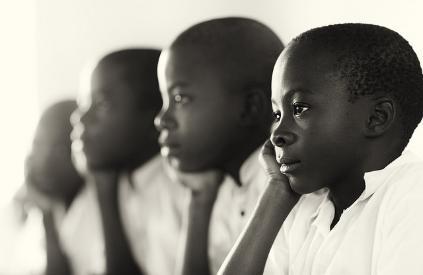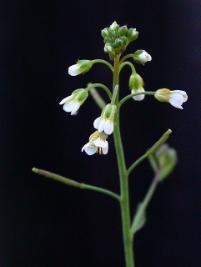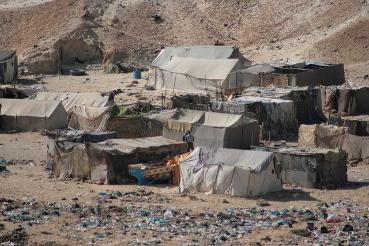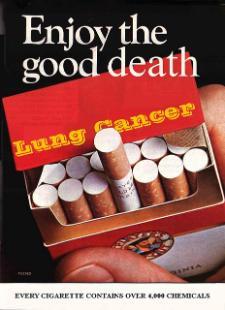Kelvin Smith PhD Scholarships 2016/17
Urban politics/Electrical Engineering:
Creating coalitions for low carbon transition in the city.
Project description: Cities have been identified as critical spaces in the battle against climate change. In the face of the power of vested interests in carbon-based energies and technologies at national level, the lack of renewable base-load capacity, and current government policy that has created considerable uncertainty, city actors are mobilising to effect changes at the local level that involve bringing together alliances of activists, local government official and scientists and technologists to develop multi-modal solutions that can address production, consumption and distribution of energy in the areas of greatest population density. New strategies that involve investment in renewable energy, the shift to district heating systems and combined heat and power systems as well as innovations in organisation and ownership – including new local public and community owned energy companies – are aimed at a step-change in low carbon transition and climate change amelioration. For full project details please see Creating Coalitions for Low Carbon Transition in the City.

PhD Candidate - Katherine Sugar
GIScience/Transport:
Towards sustainable mobility in cities: improve active travel safety using GIS-coupled urban big data analytics.
Project description: The aim of this project is to understand active travel using geographical information system (GIS) coupled urban big data analytics, assisting stakeholders from various backgrounds with decision-making regarding road safety and sustainability of urban transport. As an important way to promote sustainable transportation, active travel has become increasingly popular due to the benefits of improving physical fitness and reducing carbon emissions. However, pedestrians and cyclists are the most vulnerable road users with a high risk of exposure to road accidents. Today, emerging urban big data are shifting the manner of urban management, enabling better understanding of complex urban systems and developing effective solutions to sustainable and smart cities. Such data must be combined and analysed in meaningful ways if valuable insights on city operations are to be obtained.
Using both administrative data of UK and the unique spatial survey data collected by the Urban Big Data Centre (UBDC) (http://ubdc.ac.uk/) at University of Glasgow, the primary goal of this project is to develop GIS-coupled urban big data analytics to
- understand and predict spatial-temporal patterns/trend of urban mobility (particularly active travel),
- assess the risks of exposure to road accidents for road users (particularly pedestrians and cyclists),
- evaluate road walkability and suitability of cycling lanes, as well as to provide suggestions for priority site selection for future remedial measures.
The successful candidate will be jointly supervised by Dr Jing Yao (Lead Supervisor, UBDC), Prof. Rich Mitchell (Public Health), Dr Brian Barrett (Geography) and Prof. Piyushimita Thakuriah (UBDC). The scholar will have opportunities to work with a multi-disciplinary research team including other talented graduate students, post-doctorates, and faculty members from UBDC, School of Geographical and Earth Sciences and Centre for Research on Environment, Society and Health (CRESH) (http://cresh.org.uk/). In addition, the scholar will have exciting opportunities to gain training and experiences in spatial statistics, transport modelling and big data analytics.
Phd Candidate - Shanwen Liu
Creative Writing / Geography:
Healthy Stories: Using oral traditions to disseminate public health advice
Project description: We are seeking a creative writer to work in association with a larger existing project focusing on innovative ways of communicating health advice and good practice to diverse communities in Tanzania in the form of stories. The writer will work closely with field teams in Tanzania to gain an understanding of the oral traditions of a number of communities, enhancing our understanding of comparative narrative traditions. The writer will then work with the team to develop new stories to tell back to these communities which will help to deliver messages emerging from the health research in a way that fits within existing narrative structures.
The successful applicant will be supported to complete a practice-based thesis that will include a full-length creative element (either a full manuscript of the stories generated, or a complete work of original fiction/narrative non-fiction/poetry/drama inspired by the research process) alongside a shorter critical thesis.
PhD Candidate - Daisy Lafarge
Engineering/Plant Science:
Aerodynamic and aeroelastic aspects of the ecophysiological response of plants to high winds
Project description: One of the consequences of climate change will be changing wind patterns and intensities. Agriculture will have to adapt to the changing conditions to sustain the growing population of the world. Wind affects the growth and anatomy of plants and can have substantial effects on yield, for example through lodging and breakage. In many cases, plants respond to mechanical stress by developing secondary wall structures to resist larger, often unidirectional forces. However, many high wind environments are also characterised by large variations of wind speed and direction, which can also occur in the form of discrete or continuous strong gusts. An alternative adaption strategy for plants is thus to develop alternate, less branched or more flexible structures that can easily flex. While the growth pattern of plants subject to high wind loads has been a focus of a number of biological studies, the detailed aerodynamic and aeroelastic aspects of this phenomenon remain largely unexplored.

The objective of this project is to examine the growth response of different forms of Arabidopsis (thalecress) to wind of different speeds. To this end, Arabidopsis thaliana will be grown in controlled environments subject to different wind conditions. The anatomy of the specimens during different stages of their growing cycle will be examined and related to the wind environment. Arabidopsis thaliana is the best characterised model for studies of plant biology, and a wide range of ecotypes, natural and targeted mutants are available that affect growth form of the plant. The plant has a short growth cycle and its structures are easily quantified. It is thus ideally suited to conduct these experiments.
The structures formed by the plants will be applied to both rigid and elastic models. The models will be used to investigate the fluid and structural response through wind tunnel experiments and computational fluid dynamics simulations. These studies will provide detailed insight into the aerodynamic and aeroelastic properties of the different growth forms. A better understanding of these properties is key for the selection and redesign of plants with suitable characteristics for high wind environments. The aeroelastics of plants may also give rise to new bio-inspired mechanical, aerospace, and civil engineering structures that have improved gust response.
This project is an interdisciplinary project between the Aerospace Sciences Research Division of the School of Engineering and the Plant Science Research Group in the Institute of Molecular, Cell and Systems Biology.
PhD Candidate - Oleksandr Zhdanov
Urban Studies/Health/Education:
Community Centres as Assets for Social Regeneration and Health Improvement
Project Description:
Background:
The Scottish Government has declared a strong interest in using ‘assets for health’, although a recent review concluded that the evidence for the impacts of asset-based approaches on health ‘is currently limited’. This research will explore the role of community centres as community assets for social regeneration and health improvement.
Community Centres as Assets:
Community centres represent physical, tangible neighbourhood assets but their role in building sustainable and flourishing communities and potential in tackling the root causes of health inequality is little understood. This study will explore the processes and mechanisms by which community centres produce community benefit through exploring how four different community centres understand and enact their role in building and supporting community life across deprived neighbourhoods in the east end of Glasgow.
The research will shed light on the possibilities for community centres to develop against a context of challenge and opportunity, including: austerity and a reduction in public spending with an emphasis on preventative investment against known causes of poor health and health inequality; a drive towards services which are designed with and for communities, integrated and collaborative (as per the Christie Commission and the Scottish Government’s Thriving Places approach); and a changing understanding of the nature of communities themselves brought about by technology such as social media and increased geographic mobility. For full project details please see: Community centres as assets for social regeneration and health improvement.
PhD Candidate - Patrick McGlinchey
Statistics/Antibiotic resistance:
New statistical tools for landscape models of antibiotic resistance
Project description: This project will develop new statistical methodologies to investigate geographic, demographic and environmental risk factors for antibiotic resistance. Antibiotic resistance is one of the world’s most urgent problems. An important knowledge gap surrounding the management and control of antibiotic resistance is the relative contribution of antibiotic use in livestock and humans to human resistance problems.The goal of this project is to expose the role that humans and animals play in the spread of antibiotic resistance, and strengthen capacity to predict and manage risks to humans, using multiple routinely available sources of data on resistance in humans and livestock across Scotland. Whilst government bodies are supporting the increased collation of data on resistance and antibiotic drug use, a key challenge over the next few years lies in the developing tools to analyse these data and also new genomic data as it comes on-stream. Therefore, an important aim of this project is to develop new statistical tools to facilitate the linkage, assimilation and analysis of disparate data sources arising from different sectors (e.g. medical, veterinary, environmental). The application, adaptation and improvement of state-of-the-art statistical pattern recognition techniques applied to these data, and the test of alternative hypotheses with the identification of key factors underlying the processes leading to the spread of antimicrobial resistance will be key elements of this studentship.
The candidate will be jointly supervised by Dr Louise Matthews, an epidemiologist within the Institute of Biodiversity, Animal Health and Comparative Medicine and co-director of the Boyd Orr Centre for Population and Ecosystem Health www.gla.ac.uk/boydorr; Professors Marian Scott and Dirk Huismeier within the School of Mathematics and Statistics; and Professor Colin McCowan within The Robertson Centre for Biostatistics. The student will join a vibrant and collaborative group within the Boyd Orr Centre with a focus on developing novel science with real impact on important real world problems in medical, veterinary and ecosystem health.
PhD Candidate - Katie Stewart
Molecular cell biology/Biochemistry and Biomedical engineering:
Stress survival tactics – Intracellular protein sorting as a defence against oxidative stress
Project Description: All organisms encounter different environmental stresses. One such type of stress that has detrimental effects to cells is oxidative stress, which underpins severe human disorders like neurodegeneration, cardiovascular disease and cancer. In this project we will investigate a fundamentally novel mechanism underpinning the antioxidant cell response. The current dogma dictates that cells respond to oxidative stress by inducing gene expression of antioxidant proteins. This project will investigate a completely new oxidation defence mechanism whereby oxidation induces protein targeting to mitochondria by synthesising a new targeting peptide. Although mitochondria are primary targets of oxidants, coping with mitochondrial damage is not understood beyond the level of gene expression. This mechanism represents a paradigm shift as it links, for the first time, the antioxidant stress response to mitochondrial targeting.
The project will apply a highly interdisciplinary approach combining cell biology techniques in intact cells and isolated cell compartments, high-throughput peptide on chip chemistry techniques and advanced Imaging and microfluidics set-ups using model membranes and protocells at the nanoscale to characterise this new mode of entry to the mitochondria. These approaches push current state-of-the-art in the field and are highly synergistic in what they enable: the project relies on the application of the unique expertise of three collaborating groups from the Institutes of Molecular Cell and Systems Biology, Cardiovascular and Medical Sciences and the Biomedical Engineering group. Together, these approaches will foster a new area or research at the forefront of organellar cell biology, peptide chemistry and nanoscale biomedical engineering with substantial scientific outputs on a central problem of modern biology with an impact on human disease. The project will offer excellent interdisciplinary training in a wide spectrum of research skills combined with tailor-made transferable skills training and important opportunities for top-level international collaborations.
PhD Candidate - Ruairidh Edwards
History of medicine/Refugee studies:
The medical history of the refugee camp
Project description: This project will explore three main themes in the history of the refugee camp: the use of camps as a medical technology; refugee camps as a site of medical risk for those inhabiting them; and the camp as a ‘medicalizing’ technology.

Populations displaced by conflict, persecution, or natural disaster are often seen as being medically at risk, and as posing a medical risk to the host society. Refugee camps have been run in ways that aim, or claim, to reduce those risks: that is, the refugee camp has been a medical technology. By excluding and isolating refugees, it has aimed to protect the host society; by imposing sanitary and medical regimes, it has aimed to protect refugees from disease. But in many cases, camps have created medical risks for those inhabiting them. They have also been a medicalizing technology, serving to reduce complex political and diplomatic problems (how to integrate, repatriate, or resettle displaced populations) to a medical problem, requiring a technical solution rather than a political or diplomatic one.
Supervised by Dr Benjamin Thomas White (History), Prof Graham Watt (Primary Care and General Practice), and Prof Malcolm Nicolson (History of Medicine), the project will also involve a collaboration with the policy development and evaluation service of UNHCR, the UN refugee agency, based in Geneva.
PhD candidate - Baher Ibrahim
Synthetic Biology/Cell Biology:
Programmable vesicles for RNAi-based targeted drug delivery

Project description: Silencing of genes via RNA interference (RNAi) is a promising method to therapeutically target disease-specific genes e.g. BRCA1 genes in breast cancer or apolipoprotein E in atherosclerosis, with high efficacy and limited side effects. However, the practical applications of RNAi-based therapies are currently limited by the rapid degradation of the RNAi outside of the cell and by a lack of safe and efficient delivery methods to target tissues. This PhD project will focus on the development of a novel, targeted drug delivery platform using "programmable vesicles" for the delivery of RNA-based therapies. Using state-of-the-art techniques, the successful candidate will work to develop lipid/polymer-based vesicle drug carrier platforms. These will be combined with, in-cell expression systems, to encapsulate and express proteins for target-cell adhesion and communication and to produce "fresh" siRNA at the target site. The model vesicles will be tested for their applications in the silencing of genes of interest in target cells using in vitro approaches in order to understand their potential for translation to medicine.
This interdisciplinary PhD studentship will be based in the School of Chemistry, and will involve close collaborations with School of Engineering, Institute of Molecular, Cell and Systems Biology, and Institute of Cardiovascular and Medical Sciences in University of Glasgow.
PhD candidate - Sabrina Galinanes
Theatre Studies, Geography, Sociology:
Geodiversity and human difference - disability, landscape form and process

The project- This project works across ecological performance, geomorphology, human geographies of exclusion, and sociologies of disability to develop new understanding and accounts of the relationships between humans and environments.
Using empirical testimony of people with a range of disabilities alongside provocative and performative occupations of dynamic and hard-to-access landscape geographies, the project will explore the experience of being disabled in wild places. For full project details please follow the link: Geodiversity and human difference: disability, landscape form and process.
PhD candidate - Rachel Clive
Intended and unintended consequences of graphic health warnings on young people: the case of plain packaging.
A candidate has already been identified for this project.
Tobacco consumption is the leading cause of death globally, killing half of all persistent smokers (Doll et al., 1994; 2004) and causing an estimated 100,000 million deaths annually in the UK (ASH 2014) and 6 million worldwide (WHO, 2015). Plain packaging (PP) is an innovative tobacco control policy, aiming at encouraging smoking cessation and preventing uptake (PA, 2011a). Systematic reviews demonstrate PP to reduce the appeal of cigarettes among adolescents (Chantler, 2014; Moodie et at, 2012, 2013).

The research problem
The aim of PP is to reduce the appeal of cigarettes, discourage smoking uptake and motivate cessation. However, the policy’s use of fear appeals may cause unintended consequences. In particular, the use of fear-based GHW may impede positive engagement with anti-smoking messages among adolescents. A recent pilot study carried out at high schools in Glasgow (Tyczynska, 2015) – whose findings are consistent with studies on the use of fear appeal in other areas (Bell et al., 2010; Guttman and Salmon, 2004; Hastings, Stead and Webb, 2004; Peters, Ruiter and Kok, 2013; Thompson, Barnett and Pearce, 2009) – suggests three, especially alarming
adverse effects: (a) Young people react negatively to feelings of being paternalised, potentially fuelling desires to rebel against health messages; (b) the depiction of health consequences, which the target group cannot relate to – e.g., terminal cancers and gangrene – can provoke feelings of disengagement with health messages; (c) fear appeals can create a feeling of guilt and self-blame, which in turn impede self-efficacy beliefs that are important predictors of quit attempts (Baldwin, Baldwin and Ewald, 2006).
Aim
The research purpose is to improve the effectiveness of PP policy on adolescents. Given the rapidly growing international relevance and momentum of the policy, the PhD will combine a national and international focus. The specific aims are:
1. To test which existing GHWs – used in Australia, and about to be used in the UK – provoke unintended negative consequences among adolescents.
2. To develop and test alternative GHW that use non-fear-based creative appeals such as humour, self-esteem and happiness with regards to their ability to increase adolescents’ engagement with the anti-smoking message.
3. To assess whether GHWs have cross-cultural reach or need to be tailored to specific cultural contexts.
PhD Candidate - Nadia Fanous

